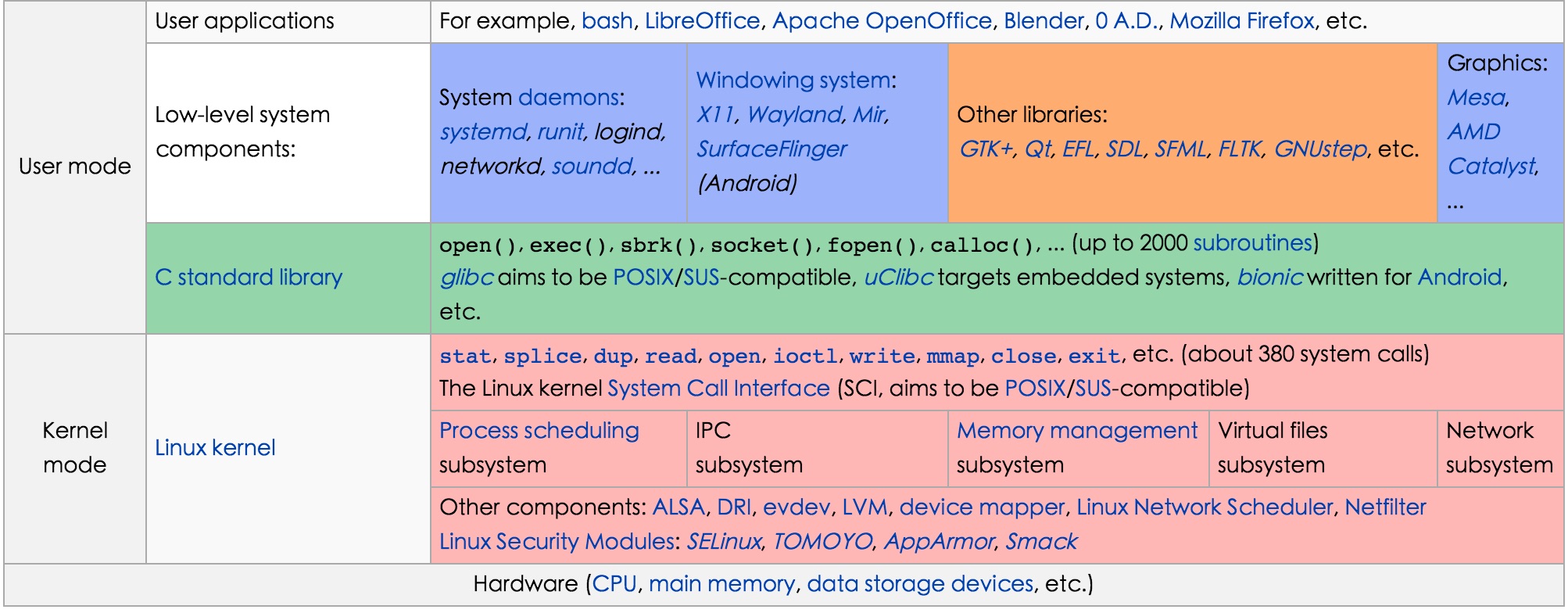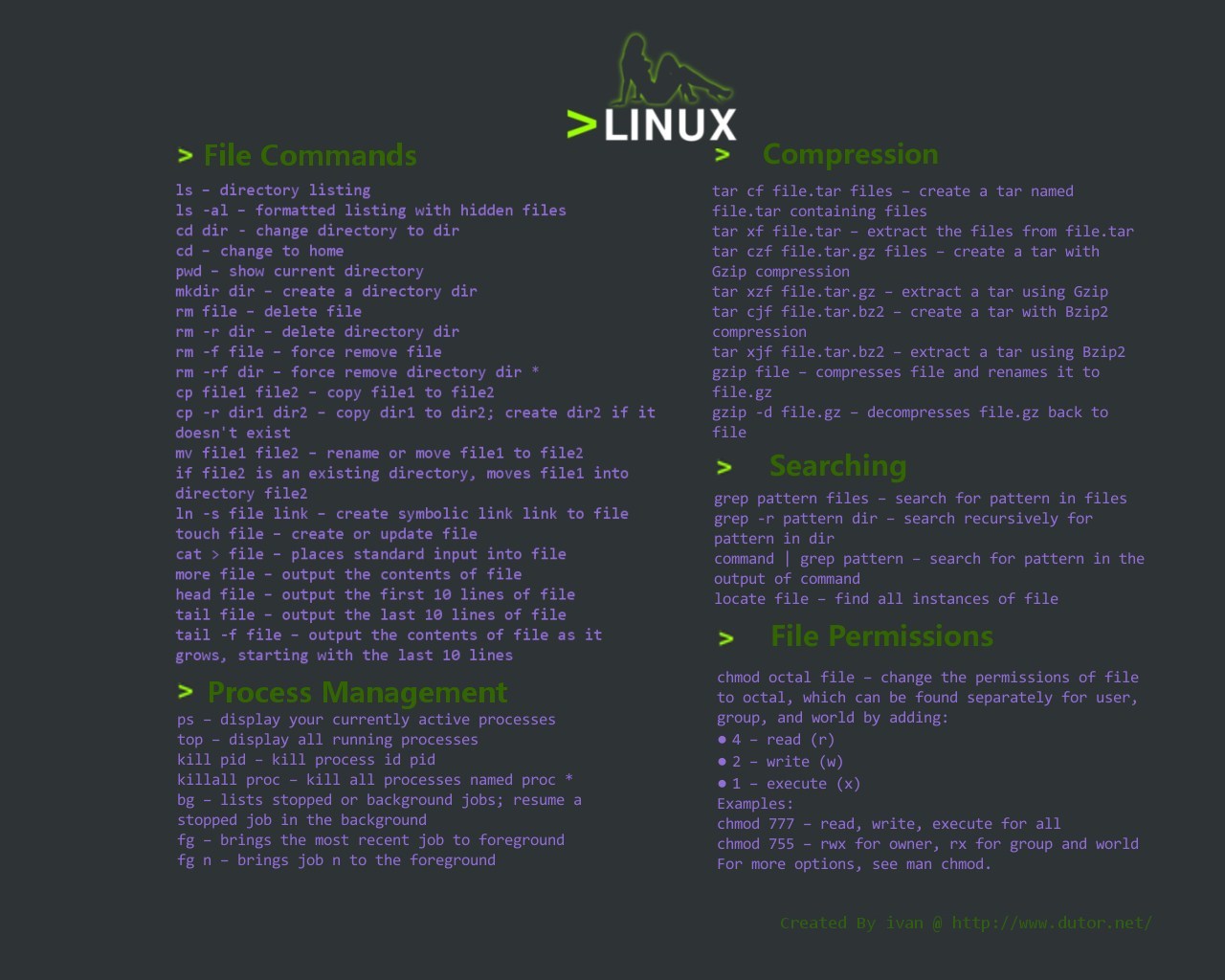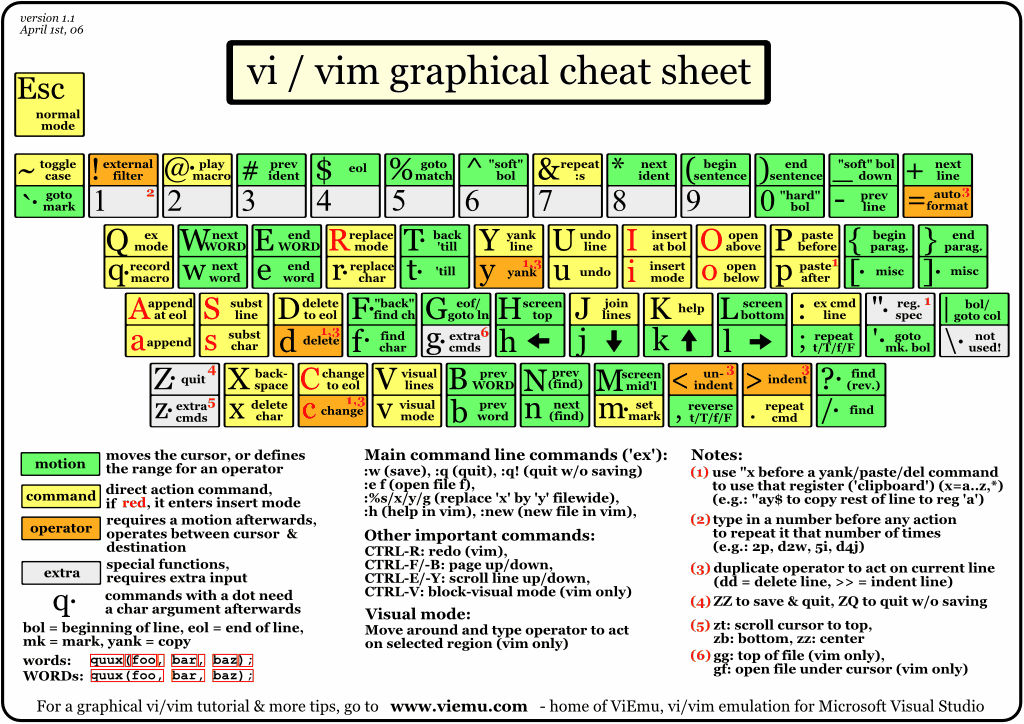Linux Basics: A must-have for full-stack developers
| Introduction | Linux is almost everywhere, whether it is server construction or client development, the basic skills of the operating system are necessary for the full stack. |
Linux distributions can be roughly divided into two categories, one is the distribution maintained by commercial companies, and the other is the distribution maintained by community organizations. The former is represented by the famous Redhat (RHEL), and the latter is represented by Debian. .
Redhat should be called the Redhat series, including RHEL, Fedora, and CentOS (the community clone version of RHEL, free). Strictly speaking, Ubuntu cannot be considered an independent distribution. Ubuntu is enhanced based on Debian, a nearly perfect Linux desktop system that has all the advantages of Debian and its own enhanced advantages. The Ubuntu community values practicality and innovation above all else.
If you need a relatively stable server system, then the best choice is CentOS. After the installation is completed, it can provide very stable services after simple configuration. But for cloud environments, unbantu may be good. Hadoop was first developed on ubantu.
ArchitectureUnderstanding the architecture can give you a better sense of direction. Linux has two modes: kernel and user. The kernel, shell and file system together form the basic operating system structure. The Linux kernel consists of the following parts: memory management, process management, device driver, file system and network management, etc.

Understanding the Linux kernel can make full use of resources and have a sense of purpose when tuning the system.

Linux divides memory into manageable "memory pages" and provides abstractions for 4KB buffers, such as the slab allocator. A process is actually a running entity of a specific application, and process scheduling controls the process's access to the CPU. Common inter-process communication mechanisms in Linux include signals, pipes, shared memory, semaphores, sockets, etc. The kernel provides an API through SCI to create a new process (fork, exec or POSⅨ), stop the process (kill, exit), and communicate and synchronize between them (signal or POSⅨ mechanism).
The Linux operating system combines independent file systems into a hierarchical tree structure, and a single entity represents this file system. Since Linux supports many different file systems and organizes them into a unified virtual file system, the device driver provides a set of abstract interfaces that the operating system can understand to complete the interaction with the operating system, while the specific hardware-related The details of operation are done by the device driver. The network portion of the Linux kernel consists of BSD sockets, network protocol layers, and network device drivers. Network device drivers are responsible for communicating with hardware devices, and there is a corresponding device driver for every possible hardware device.
linux file systemLinux system can support a variety of currently popular file systems, and EXT4 is recommended.
The main file types under Linux are:
1) Ordinary files are divided into plain text and binary.
2) Directory file, where files are stored.
3) Link files, files pointing to the same file or directory.
4) Device files are divided into block devices and character devices.
5) Pipe files provide inter-process communication
6) Socket file, related to network communication
Linux uses a standard directory structure. The installation program has already created a file system and a complete and fixed directory composition for the user, and specified the role of each directory and the file types in it.
| Directory name | A brief description |
|---|---|
| /bin | Binary executable command |
| /dev | Device special files |
| /etc | System management and configuration files |
| /etc/rc.d | Startup configuration files and scripts |
| /home | The base point of the user's home directory. For example, the home directory of user abc is /home/user, which can be represented by ~abc |
| /lib | Standard Programming Library |
| /sbin | System management commands, the management programs used by system administrators are stored here |
| /tmp | Public temporary file storage point |
| /root | System administrator’s home directory |
| /mnt | The system provides this directory to allow users to temporarily mount other file systems. |
| /lost found | This directory is usually empty. The system shuts down abnormally and leaves "homeless" files |
| /proc | Virtual directory is a mapping of system memory. This directory can be accessed directly to obtain system information. |
| /var | The overflow area of certain large files, such as log files of various services |
| /usr | The largest directory, almost all the applications and files to be used are in this directory. Contains: /usr/X11R6 directory where X window is stored /usr/bin Numerous Applications /usr/sbin Some management programs for super users /usr/doc linux documentation /usr/include Header files required to develop and compile applications under Linux /usr/lib Commonly used dynamic link libraries and software package configuration files /usr/man Help Document /usr/src source code, the source code of the Linux kernel is placed in /usr/src/linux /usr/local/bin Locally added commands /usr/local/lib Locally added libraries |
Shell is the user interface of the system, providing an interface for users to interact with the kernel. It receives commands entered by the user and sends them to the kernel for execution. It is a command interpreter. There are many types of shells, but BASH is recommended here. BASH is GNU's Bourne Again Shell, which is the default shell on the GNU operating system. Most Linux distribution packages use this shell. Linux Shell and Commands
Linux has many commands. A simple classification is given below.

Organizing Linux commands in the shell to complete a series of tasks is shell programming. Shell, Perl and Python are the most commonly used scripting languages on Linux, and I still recommend using Python.
Standard Linux systems generally have a set of programs called applications, which include text editors, programming languages, X Window, Internet tools, databases, etc.
For text editing, Emacs and vim have their own merits. They can even be used as IDEs through plug-ins. Personally, I feel that VIM should be a necessary skill. There are also many commands in vim, which are summarized as follows:

As far as application management is concerned, ubuntu needs to be familiar with the apt command, and centos needs the yum command. Of course, source code compilation and installation are necessary. The writing of makefile and the usage of configure/autoconfig/make must be familiar to you.
The above is the detailed content of Linux Basics: A must-have for full-stack developers. For more information, please follow other related articles on the PHP Chinese website!

Hot AI Tools

Undresser.AI Undress
AI-powered app for creating realistic nude photos

AI Clothes Remover
Online AI tool for removing clothes from photos.

Undress AI Tool
Undress images for free

Clothoff.io
AI clothes remover

Video Face Swap
Swap faces in any video effortlessly with our completely free AI face swap tool!

Hot Article

Hot Tools

Notepad++7.3.1
Easy-to-use and free code editor

SublimeText3 Chinese version
Chinese version, very easy to use

Zend Studio 13.0.1
Powerful PHP integrated development environment

Dreamweaver CS6
Visual web development tools

SublimeText3 Mac version
God-level code editing software (SublimeText3)

Hot Topics
 What computer configuration is required for vscode
Apr 15, 2025 pm 09:48 PM
What computer configuration is required for vscode
Apr 15, 2025 pm 09:48 PM
VS Code system requirements: Operating system: Windows 10 and above, macOS 10.12 and above, Linux distribution processor: minimum 1.6 GHz, recommended 2.0 GHz and above memory: minimum 512 MB, recommended 4 GB and above storage space: minimum 250 MB, recommended 1 GB and above other requirements: stable network connection, Xorg/Wayland (Linux)
 Linux Architecture: Unveiling the 5 Basic Components
Apr 20, 2025 am 12:04 AM
Linux Architecture: Unveiling the 5 Basic Components
Apr 20, 2025 am 12:04 AM
The five basic components of the Linux system are: 1. Kernel, 2. System library, 3. System utilities, 4. Graphical user interface, 5. Applications. The kernel manages hardware resources, the system library provides precompiled functions, system utilities are used for system management, the GUI provides visual interaction, and applications use these components to implement functions.
 How to run java code in notepad
Apr 16, 2025 pm 07:39 PM
How to run java code in notepad
Apr 16, 2025 pm 07:39 PM
Although Notepad cannot run Java code directly, it can be achieved by using other tools: using the command line compiler (javac) to generate a bytecode file (filename.class). Use the Java interpreter (java) to interpret bytecode, execute the code, and output the result.
 vscode terminal usage tutorial
Apr 15, 2025 pm 10:09 PM
vscode terminal usage tutorial
Apr 15, 2025 pm 10:09 PM
vscode built-in terminal is a development tool that allows running commands and scripts within the editor to simplify the development process. How to use vscode terminal: Open the terminal with the shortcut key (Ctrl/Cmd). Enter a command or run the script. Use hotkeys (such as Ctrl L to clear the terminal). Change the working directory (such as the cd command). Advanced features include debug mode, automatic code snippet completion, and interactive command history.
 How to check the warehouse address of git
Apr 17, 2025 pm 01:54 PM
How to check the warehouse address of git
Apr 17, 2025 pm 01:54 PM
To view the Git repository address, perform the following steps: 1. Open the command line and navigate to the repository directory; 2. Run the "git remote -v" command; 3. View the repository name in the output and its corresponding address.
 vscode cannot install extension
Apr 15, 2025 pm 07:18 PM
vscode cannot install extension
Apr 15, 2025 pm 07:18 PM
The reasons for the installation of VS Code extensions may be: network instability, insufficient permissions, system compatibility issues, VS Code version is too old, antivirus software or firewall interference. By checking network connections, permissions, log files, updating VS Code, disabling security software, and restarting VS Code or computers, you can gradually troubleshoot and resolve issues.
 Where to write code in vscode
Apr 15, 2025 pm 09:54 PM
Where to write code in vscode
Apr 15, 2025 pm 09:54 PM
Writing code in Visual Studio Code (VSCode) is simple and easy to use. Just install VSCode, create a project, select a language, create a file, write code, save and run it. The advantages of VSCode include cross-platform, free and open source, powerful features, rich extensions, and lightweight and fast.
 Can vscode be used for mac
Apr 15, 2025 pm 07:36 PM
Can vscode be used for mac
Apr 15, 2025 pm 07:36 PM
VS Code is available on Mac. It has powerful extensions, Git integration, terminal and debugger, and also offers a wealth of setup options. However, for particularly large projects or highly professional development, VS Code may have performance or functional limitations.






